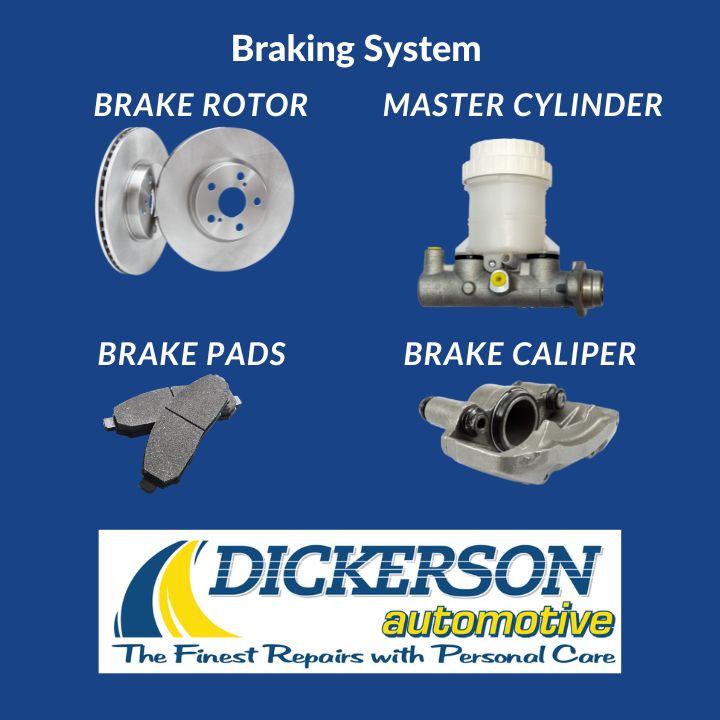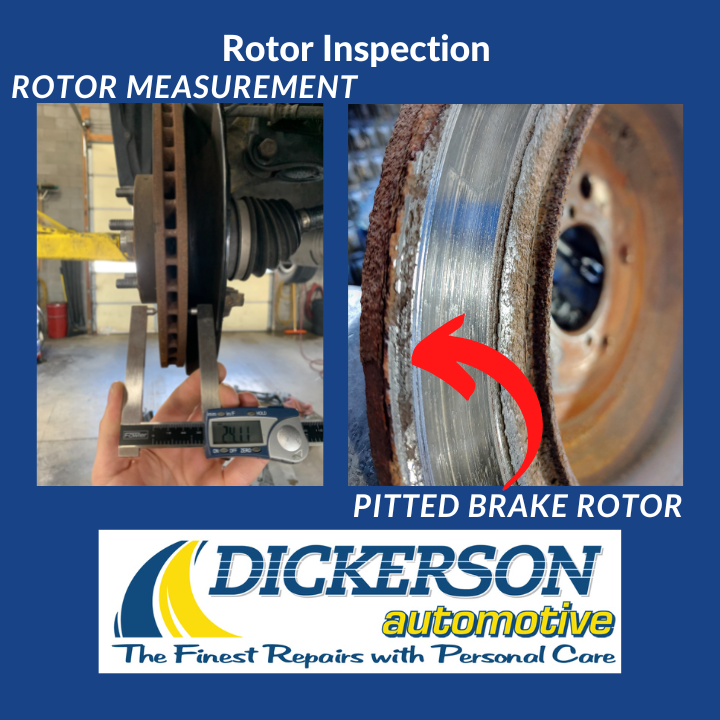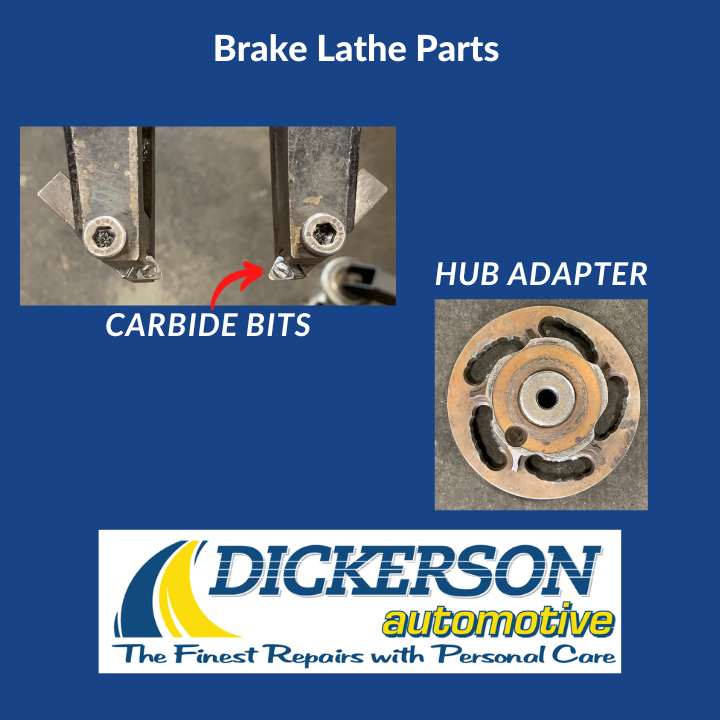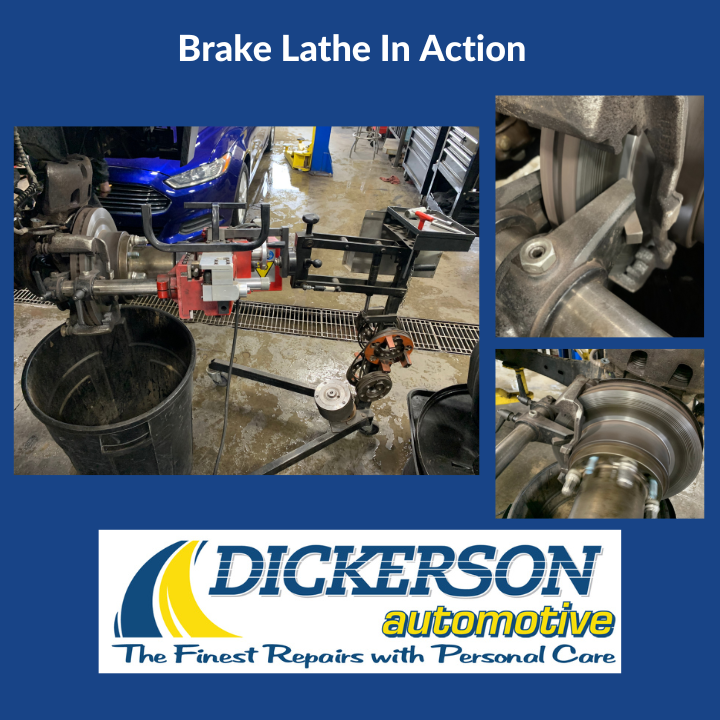Why Does My Car Shake When Braking?
Shaking when stepping on the brake pedal is usually an indicator of warped disk brake rotors. The technical term for this is called thickness variations in the brake rotors. The braking systems on a vehicle is a simple idea with complex components all working together at the same time, lets talk about how a braking system functions and what may be causing the famous shaking when braking problem.
How Do Disk Brakes Work?
It is easiest to explain this by breaking down the system to its most basic parts. Braking systems have a master cylinder, brake caliper, brake pads, and brake rotors. The master cylinder is full of brake fluid and is directly connected to the brake pedal. When the brake pedal is pressed a piston is forced forward inside the master cylinder creating hydraulic pressure in the brake lines. This hydraulic pressure is then sent to the brake caliper. There is a piston inside of the brake caliper that is forced outward with the hydraulic pressure from the master cylinder to contact the brake pads. The brake pads then meet the brake rotor creating friction forcing the vehicle to slow down.
What Causes A Disk Brake Rotor To Warp?
With friction comes heat and a lot of heat is generated when the brake pads are making contact with the brake rotor. The average temperatures of a braking system range from 350 – 400 degrees Fahrenheit. Braking systems are designed to withstand these conditions by venting the brake rotors and most brake pads have a groove cut into them to try and keep the brake pads and rotors as cool as possible. Overtime though these high temperatures can cause the metal to warp and misshape causing a shaking condition when stepping on the brake pedal.
How Do You Correct The Shaking?
The easiest way to correct the shaking is to just simply replace the brake rotor, but brake rotors can be expensive. There is a much more cost-effective way by machining or resurfacing the existing brake rotor with a brake lathe. To properly resurface rotors the rotor must be carefully inspected. When inspecting rotors for a resurface they must be checked for any pitting. Pitting is described as making a hollow or indentation in a surface. The rotor surface is inspected for any excessive indentations or grooves in the rotor surface that would prevent the brake lathe from cutting the metal clean. When a pitted rotor is resurfaced it will cause the brake lathe to chatter, this chattering condition will leave small grooves in the surface and will cause a vibration when braking. The last thing that is inspected is rotor thickness. Every rotor on a vehicle has a minimum specification, when resurfacing a rotor a small amount of metal is removed and slightly thins out the surface of the rotor to make it flat again. A caliper style micrometer is used to measure the thickness of a rotor and readings are recorded. If brake rotor thickness will fall below the minimum specification after resurfacing the rotor, a rotor resurface cannot be performed and rotors must be replaced.

How Does A Brake Lathe Work?
Once it is determined the rotor is within resurfacing specifications we can now install the brake lathe. The lathe has multiple hub adapters which allow us to install the brake lathe to the wheel hub and start the resurface. The lathe has two triangle shaped bits made of carbide steel. These bits make contact with the rotor faces on both sides and removes the rotor material. Very fine amounts of metal are removed from the rotor surface at a time, only .1 millimeters is removed from each side of the rotor. Sometimes rotors take multiple resurfacing passes to get the surface back to a smooth flat condition. Once the rotor surface has been completely refinished the brakes can be reassembled and the shaking condition gone!


Satisfaction Guaranteed
At Dickerson Automotive customer satisfaction is our top priority. Our technicians use state of the art equipment and receive professional training to keep us on the cutting edge. Resurfacing rotors is not an easy task and requires very fine attention to detail. We guarantee the rotors will have less than .003 lateral run out to help ensure thickness variation from reoccurring, brakes will also be free of squeaking and shaking, as well as proper installation of the brake pads and calipers to offer the longest possible brake pad and rotor life. If you are in need of brake service or even if you have questions regarding brake services don’t hesitate to give us a call!
Sources:
- https://techtalk.mpbrakes.com/how-to-series/how-does-a-master-cylinder-work
- https://www.akebono-brake.com/english/product_technology/product/automotive/disc/#:~:text=Disc%20brake%20construction,down%20and%20stopping%20the%20vehicle.
- https://www.motorauthority.com/news/1109461_thermal-camera-shows-how-hot-brake-rotors-get-during-use#:~:text=During%20normal%20street%20use%2C%20brake,more%20often%20and%20more%20aggressively.
- https://www.google.com/search?q=pitting+defined&rlz=1C1CHZN_enUS984US984&ei=itGtY9-mLJLV9APV2pSYCA&ved=0ahUKEwjfk-yUsJ_8AhWSKn0KHVUtBYMQ4dUDCA8&uact=5&oq=pitting+defined&gs_lcp=Cgxnd3Mtd2l6LXNlcnAQAzIKCAAQFhAeEA8QCjIFCAAQhgMyBQgAEIYDMgUIABCGAzoKCAAQRxDWBBCwAzoHCAAQsAMQQzoHCAAQsQMQQzoECAAQQzoICAAQgAQQsQM6BQgAEIAEOhcIABCABBBGEPkBEEYQ9AMQ9QMQ9gMYAToHCAAQgAQQCjoGCAAQFhAeOggIABAWEB4QD0oECEEYAEoECEYYAVDNA1icF2CkGGgBcAF4AIABYYgBsAWSAQE4mAEAoAEByAEKwAEB2gEGCAEQARgT&sclient=gws-wiz-serp